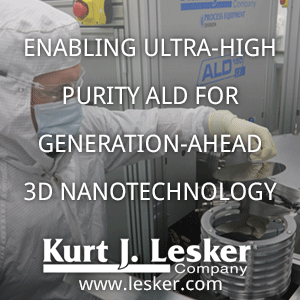Whoah! this is really cool stuff" Researchers from North Carolina State University have created stretchable, transparent conductors that work because of the structures’ “nano-accordion” design. The conductors could be used in a wide variety of applications, such as flexible electronics, stretchable displays, or wearable sensors. (Youtube)
The dimensions of each ridge directly affect the transparent conductor’s stretchability (Image: Abhijeet Bagal, NC State News).
The fabrication process of multifunctional nano-accordion structures:
1. The photoresist template is patterned with 500 nm period using
interference lithography.
2. A ZnO thin film is then deposited on the
photoresist template using ALD.
3. The ZnO nano-accordion structure is
then transferred by lift-off onto PDMS substrate by dissolving
photoresist template.
“We can also control the thickness of the zinc oxide layer, and have
done extensive testing with layers ranging from 30 to 70 nanometers
thick,” says Erinn Dandley, a Ph.D. student in chemical and biomolecular
engineering at NC State and co-author of the paper. “This is important
because the thickness of the zinc oxide affects the structure’s optical,
electrical and mechanical properties.” - NC State News
A new stretchable, transparent conductor could be used in flexible electronics, stretchable displays, or wearable sensors (Abhijeet Bagal, NCSU News )
Amazing Youtube video showing the trasparent nano-accordion in action.
For all the details to this rather amazing fabrication process check out the article, “Multifunctional Nano-Accordion Structures for Stretchable Transparent Conductors,” is published online in the journal Materials Horizons. The paper was co-authored by Erinn Dandley, Junjie Zhao, Xu Zhang, Christopher Oldham and Gregory Parsons of NC State. The custom ALD reactor used in this work has been described earlier (Chem. Mater., 2009, 21 (5), pp 820–830 DOI: 10.1021/cm8020403)



%20(1).png)

No comments:
Post a Comment